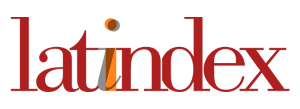Dynamic Exercises in Teaching Mathematics in Higher Educational Institutions
A.A. Adizov
Associate Professor of the Fiscal Institute under the State Tax Committee of the Republic of Uzbekistan. Tashkent, Uzbekistan
Keywords: mathematics, information technology, teaching
Abstract
In recent years, in the teaching of almost all disciplines around the world, there has been a tendency to take into account the individual characteristics of students, which also affected the subjects of the physics and mathematics cycle in higher education. At the same time, taking into account such a factor as the main channel of perception is practically not covered in modern literature. The article analyzes taking into account the modality of students' perception when teaching mathematics at a university, describes the features and methodological methods of teaching kinesthetics. The purpose of the article is to show the possibilities of individualization in the teaching of mathematics by means of assignments that take into account differences in the leading channel of information perception. Particular attention in the article is paid to the use of dynamic exercises, which require, along with the performance of mental actions, the performance of physical movements or their imitation. Performing this kind of exercise is one of the most effective forms of learning for kinesthetic learners. The article discusses specific examples of the use of dynamic exercises in the study of mathematical disciplines in higher education, describes an approach to using a cycle of practical work and experiments to confirm the truth of the provisions under consideration. An analysis is given of the use of a laboratory experiment, outdoor games and quest tasks in the context of using dynamic exercises in the methodology of teaching mathematics. Taking into account possible changes in the organization of education caused by the global pandemic, the features of the use of dynamic exercises in the course of studying mathematics during distance learning are considered. The article considers the consideration of the individual characteristics of students in the study of mathematics, the conclusion is made about the prospects of using the forms and methods of teaching, taking into account the modality of perception by students
References
Ахмедов, Б. А. (2021). Таълимда ахборот технологиялари фанининг модулларини ўқитишда кластерли-инновацион технологиялардан фойдаланиш тамойиллари. Oʻzbekiston respublikasi oliy va oʻrta maxsus ta’lim vazirligi, 441.
Akhmedov, B. A. (2023). Improvement of the digital economy and its significance in higher education in tashkent region. Uzbek Scholar Journal, 12, 18-21.
Akhmedov, B. A. (2023). Innovative pedagogical technologies in the modern educational system. World Bulletin of Social Sciences, 19, 107-112.
Akhmedov, B. A. (2022). Use of Information Technologies in The Development of Writing and Speech Skills. Uzbek Scholar Journal, 9, 153-159.
Akhmedov, B. A. (2022). Psychological and pedagogical possibilities of forming tolerance in future teachers. Uzbek Scholar Journal, 11, 289-295.
Akhmedov, B. A. (2023). Methods to increase algorithmic thinking in primary education. Uzbek Scholar Journal, 12, 22-26.
Ахмедов, Б. А. (2023). Интеграллашган таълимда талабалар билимларини виртуал тест назорат қилиш тизимларини ишлаб чиқиш концепцияси. PEDAGOG, 1(5), 86-92.
Akhmedov, B. A. (2022). Principles of Developing the Professional Competence of Future Teachers on the basis of a Cluster Approach. Galaxy International Interdisciplinary Research Journal, 10(6), 760-770.
















